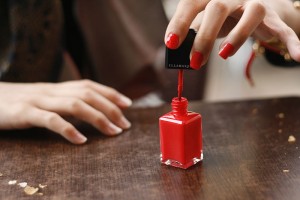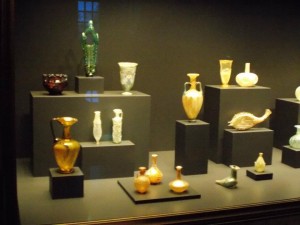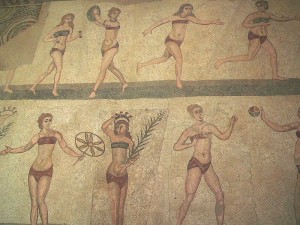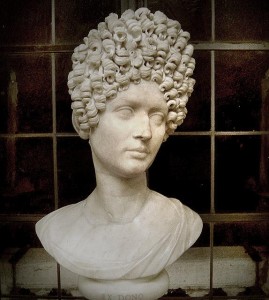5 Ancient Beauty Tips…You Don’t Want to Try! Posted by Brittany Britanniae on Jul 23, 2014 in Roman culture
SALVTE OMNES!
So today we will be talking about beauty tips or abduction habits. Do you personally have a beauty regiment? Do your friends or partner think are strange, because you will only buy a certain type of shampoo? Conditioner? Cologne? Hair Gel? Do you have a strict way of applying eyeliner or eye shadow? While none of these items (that I have mentioned) are extreme- in today’s era, there are some extreme methods of achieving “beauty.” Modern society promotes these ways for the sake of beauty; I am referring to the “starvation, nip and tuck, injections, and so on.” However, I should put the question to you- which do you think is worse? Modern day or Ancient Times?
Well, prepare to be amazed at what the people of antiquity use to use in their own beauty regiments!
COMPLEXIONS- “SKIN WHITE AS SNOW & CHEEKS ROSY AS BLOOD”
WHY: Romans enjoyed the look of fairer skin due to its association to the “non-working” high class. Furthermore, rosy cheeks were a sign of healthiness and vitality.
HOW IT WAS ACHIEVED: (SKIN) chalk powder, white marl and white lead( which was poisonous).
HOW IT WAS ACHIEVED: (CHEEKS) poppy and rose petals, red chalk, crocodile dung, mulberry juice, wine dregs, cinnabar and red lead (these two were poisonous!).
SKINCARE METHODS-:Ancient Romans had a vast number of creams and lotion to help fight and hide wrinkles, pimples, sun spots, freckles and flaking. These include: masks of lentels, barley, lupine, honey, sulphur, vinegar, goose grease, basil juice, placenta and even excrements of the kingfisher or calves! Pimples were cured with a mixture of barley flour and butter; while, sun spots were treated with the ashes of snails (Slimy goodness?). Historically speaking, a famous method used was the process of bathing in asses’ milk which worked like a chemical peel and was used by such as historic figures as Cleopatra VII and Poppaea Sabina.
EYES: “BIGGER IS BETTER”

Portrait of the baker Terentius Neo with his wife found on the wall of a Pompeii house (LOOK TO THE WIFE’S EYES) Courtesy of Wikicommons & Anonimiski
WHY: Romans liked large eyes with long eyelashes and eyebrows that almost met (unibrows).
HOW IT WAS ACHIEVED: (EYEBROWS) They would darken eyebrows with antimony or soot.
HOW IT WAS ACHIEVED: (EYES) On the eyes, they would apply kohl. The kohl was applied with a glass, ivory, wood or bone sticks that had to be dipped into either water or oil before putting them on the eyes ( I don’t know about you, but I wouldn’t want to put glass or bone near my eyes for any reason!).
LIPS, NAILS, TEETH- ” NOTHING TOO BIG, WEIRDLY SHAPED, or DISCOLORED!”

Fingernails before and after application of red nail polish. Courtesy of Wikicommons & Deerstop & Zitona
WHY: Romans enjoyed having their partners looking natural, but the best they could. No one would want someone with hideous long creepy curly nails, nor someone with scared lips, and lastly not someone with black pointy teeth. It is not an unreasonable societal ideal, because it still exists today.
HOW IT WAS ACHIEVED (LIPS): Unfortunately there no such evidence has materialized to indicate that the Romans ever colored their lips, but it is not a far off speculation that if cheeks were given a rosy color that lips weren’t. Then again, I imagine most of what they were applying to their cheeks would have not tasted good on their lips.
HOW IT WAS ACHIEVED (NAILS): The mixture in which is thought to have been applied to nails is red dye (imported from an Indian insect). Also, a mixture made with sheep fat and blood was used.
HOW IT WAS ACHIEVED (TEETH): White teeth were prized by the Romans, and so false teeth, made from bone, ivory and paste, were popular items. One way to whiten teeth was to use powder like hartshorn, which had ammonia bleaching properties. Also, they used human urine as a mouthwash and teeth whitening substance, which also had ammonia and was used in laundering. Human urine became so valuable that the emperor Nero ( and later emperors) even placed a taxes on it.
PERFUME- “WHAT’S THAT SMELL?”

Perfume Bottles & Glass Bottles. Courtesy of the Getty Villa Museum, Brittany Garcia & the glass blowers who made them thousands of years ago.
WHY: Who wants to be around someone who is smelly? The Ancient Romans were no fools; they considered that if an individual smelled good that they were in good health, socially savvy, and a pleasure to be around.
HOW WAS IT ACHIEVED (PERFUME): Perfumes were made from flowers, some food (lemon, olives, grapes), leaves, roots and kept either liquid, sticky or solid form. These mixtures were incorporated into types of deodorants made with rose petals or irises. In regard to breath fresheners, baking soda was used perhaps to masks the smell of urine.
HAIR-” COLORFULLY OUTRAGEOUS & ONLY ON YOUR HEAD”
WHY: The expectation for beauty is sometimes beyond understanding; however, beauty is often that which is considered rare and hard to attain. Thus the colored hair/wigs would be highly rare and therefore- desirable. In concerns to body hair, most men/society do not approve of their women feeling hairy like men. However, there are bound to be a few women who could care less!
HOW IT WAS ACHIEVED (COLORFUL HAIR): Roman women wore wings to hide white hair or hair that was damaged by hair dyes. In addition, the Romans used dyes to accentuate hair colors. Blonde hair was created with beeches ash and goat’s fat. Red hair was done by pulverizing the leaves of the Lawsonia Inermis ( similar to henna plant). Black hair instead was obtained by black antimony with animal fat. (SO, Lots of animal fat).
HOW IT WAS ACHIEVED (BODY HAIR): Women would remove them by plucking or shaving. In alternative, they also used a resin paste to strip them or a pumice stone to scrape them (OUCH!)
Well I hope this was an interesting read and that you learned something that you did not know about those Latin speakers of old.

Build vocabulary, practice pronunciation, and more with Transparent Language Online. Available anytime, anywhere, on any device.
About the Author: Brittany Britanniae
Hello There! Please feel free to ask me anything about Latin Grammar, Syntax, or the Ancient World.






Comments:
Dexter Pohorilla:
Hello! I just would like to give a huge thumbs up for the great info you have here on this post. I will be coming back to your blog for more soon.